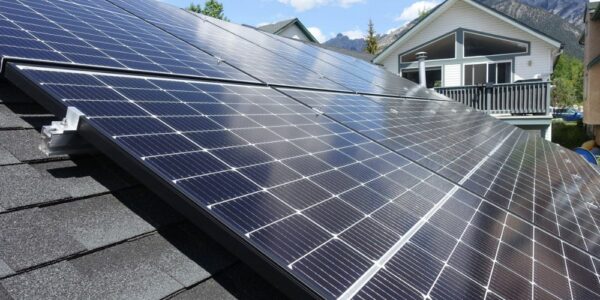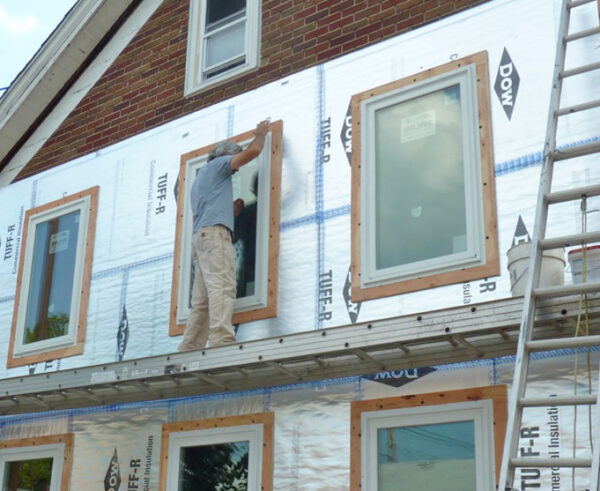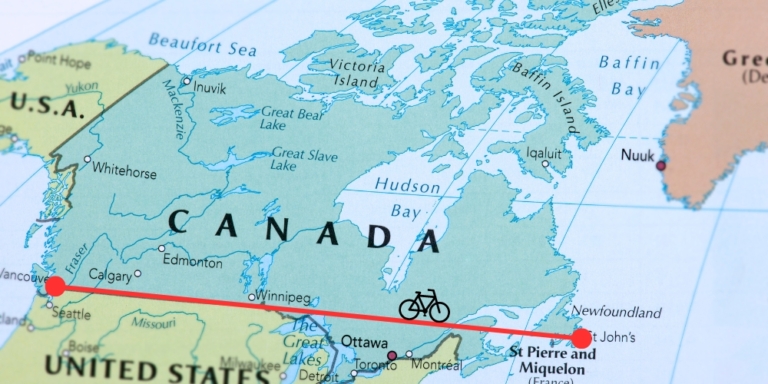Almost daily, we hear about the increasing frequency and severity of extreme weather events.
The cost of these events to our society is huge, and many people in Alberta are getting increasingly nervous about the possibilities of wildfires, drought, floods, excessive heat and tornadoes impacting their lives.
Evidence points to the increasing levels of carbon pollution in our atmosphere as a driver of extreme weather and that the more we reduce carbon levels, the less extreme the weather will become.
Instead of hiding in our basements in despair, there are two simple things we could do as a society right now that will cut our heat-trapping gas output in a big way and improve our lives.
It just takes social and political will and action.
The first is to make our buildings greener and more energy efficient.
The second is to invest in more public transit.
Sounds simple enough, and it is.
Rethink Heating and Cooling
Heating and cooling buildings and manufacturing and transporting building materials create more than 40 percent of all global greenhouse gas emissions.


Large buildings like schools and office buildings are energy pigs.
Researchers from Concordia University studied a school that runs on geothermal heat pumps.
They found that special sensors could reduce energy use at peak times when power is most expensive and chop power bills in half.
When bills go down, it means the school is using less energy. That’s a win-win.
“This way, instead of relying on a traditional reactive controller like [an ordinary] thermostat, we can program the school’s [heating, ventilation and air conditioning] system to turn on several hours before the school opens. This approach allows us to let the building gradually warm to the temperature required, as well as to exchange the air supply inside,” Concordia researcher Navid Morovat told The National Observer.
Morovat and his colleagues didn’t stop there.


They also examined the benefits of adding a photovoltaic/thermal solar air heating system to the school.
This system draws fresh air warmed by solar energy into the building’s ventilation system and creates energy from sunlight.
“This means that children arrive at a school that is already at the thermal comfort level they need and with air that is fresh. As an extra bonus, the school’s electricity bill is reduced,” said Morovat.
Imagine the environmental and human health benefits if this readily available technology was applied to buildings heated with climate-changing natural gas.
The big takeaway is that buildings can use less energy to keep students, employees, or residents warm and comfortable and save tons of money as well.
Who wouldn’t want that?
If all new buildings were designed to low emission standards, the benefits would be huge.
A 2014 University of California Berkeley study found that building to LEED (Leadership in Energy and Environmental Design) standards would cut emissions by 50 percent.
It begs the question, why aren’t we doing this now?
Too Many Cars?
Another big question is, why is well-designed public transit so hard to find in Canadian cities?
Single occupancy vehicles clogging streets and idling in traffic jams are the worst way to move people around.
The vehicles spew exhaust into the atmosphere, poison the air we breathe, and lead to road rage and commuter frustration.
At the same time, a huge amount of valuable real estate is dedicated to parking cars when it could be used for things like affordable housing, bike lanes, city parks, and green space.
City councils will budget $10 or $20 million for a new highway interchange with very little pushback, but spend years trying to create a simple bike lane or get a few more buses for their transit system.


A new report from the non-profit organizations Environmental Defence and Équiterre shows how doubling public transit ridership by 2035 will reduce Canada’s heat-trapping gas output by 65 million tons in just ten years.
That’s the same as the annual emissions from 20 million cars.
In 2022, 26.3 million road vehicles were registered in Canada.
Nate Wallace, co-author of the report, told The National Observer that the federal government has made a good start with a target of 2035 for all new vehicle sales to be zero-emission.
But all of us buying EVs won’t magically stop carbon emissions. There are many environmental impacts of producing EVs, such as mining minerals for batteries and steel. The fewer cars of all types on the road, the better.
The missing piece from all levels of government is that there are no targets to increase public transit ridership.
Public transit is where big and quick climate wins can be made on the transportation front.
One of the problems is how federal funding for transit is allocated. Ottawa contributes about 40 percent toward the cost of provincial transit infrastructure but doesn’t fund increasing service, hours and frequency of existing transit.


Transit That Works for People
The quickest way to turn people off transit is long lines and a lousy schedule.
Most transit users use transit because they have to, not because they want to!
That has to change.
Numerous jurisdictions worldwide offer free public transportation because the long-term financial benefits significantly exceed the short-term loss of revenue.
If using transit was free, fast and efficient, most Albertans would be on board.
With free transit, the average Alberta family would only need one car rather than the two or three that they now own.
A 2015 City of Edmonton study showed that the average family owned 2.28 vehicles per household in the wider Edmonton region.
Cars cost a lot to own, and being able to spend less AND help reduce our carbon pollution is a win-win for Albertan’s pocketbook AND the environment.
Governments must get a lot smarter about green buildings and public transit.
Just mandating EVs is not enough.
We can pay now and benefit later, or benefit now and really pay later.
The choice is ours.






